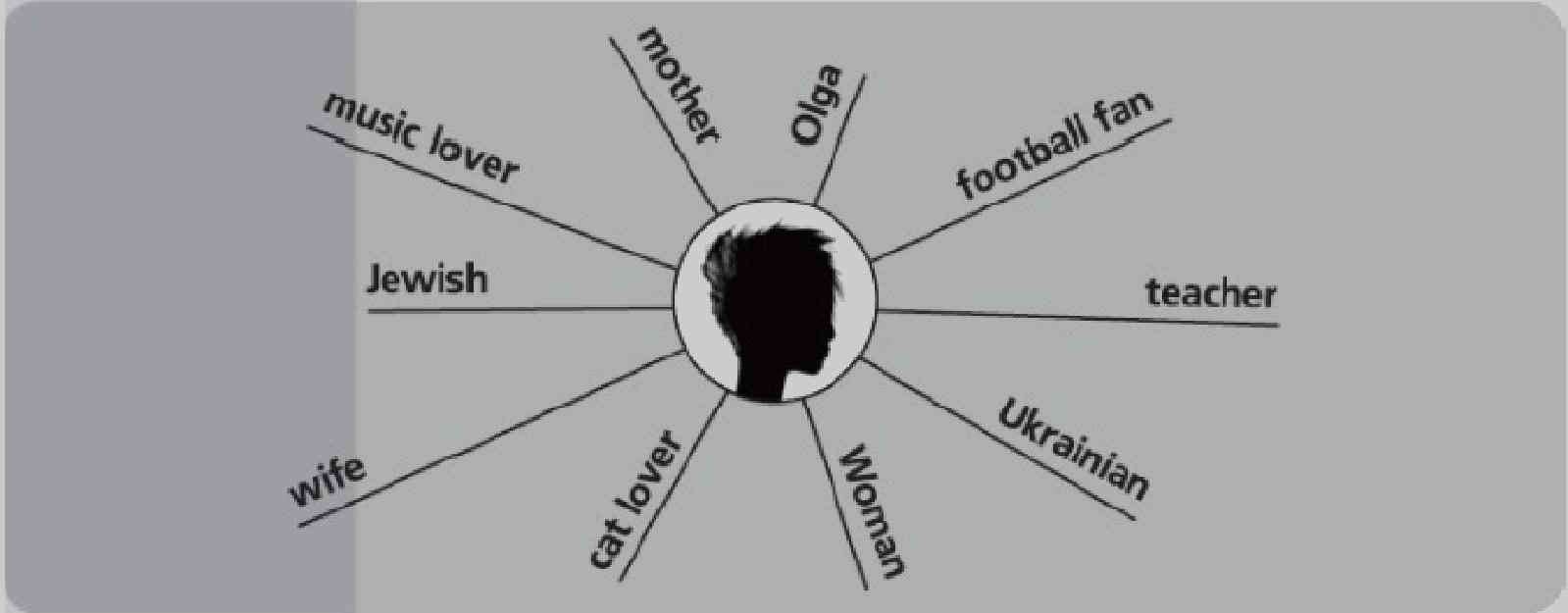Who are I
TOOLBOX GROUP
Group 2 – non subject-specific activities, Group 4 – promoting and supporting mobility
AUDIENCE
a class of pupils from 14 to 18
LEARNING OBJECTIVES
- To increase understanding of the concept of identity and widen self-awareness
- To develop communication skills
- To promote solidarity and respect
TIME
25 minutes
NECESSARY MATERIALS
- Coloured pens and markers, if possible a different colour for each participant
- Enough paper for one sheet per person
- Flipchart paper and markers
STEP-BY-STEP DESCRIPTION OF THE ACTIVITY
- To warm up, ask people to get into pairs to form buzz groups. Ask them to pretend that they are strangers and to introduce themselves to each other.
- Now ask people to reflect what is interesting or important to know about someone else when you first meet, and brainstorm the general categories of information. For example, name, age, sex, nationality, family role, religion, age, gender, ethnicity, job/study, taste in music, hobbies, sports, general likes and dislikes and more.
- Now explain that participants are going to find out how much each of them has in common with others in the group. Hand out the paper and pens and explain that the first step is for each of them to draw a representation of their identity. They should think of themselves like stars; aspects of their identity radiate out into their society. Ask people to consider the eight to ten most important aspects of their identity and to draw their personal star. (see: appendix)
- Tell people to go around and compare their stars. When they find someone else with whom they share a beam or ray, they should write that person’s name near the beam. (For example, if Jan and Parvez both have a “rapper” beam, they should write each other’s names along that beam). Allow 15 minutes for this.
- Now come back into plenary and ask people to talk about how each of individuals were.
- You could ask:
- Which aspects of identity do people have in common and which are unique?
- How similar and how different are people in the group? Do people have more in common with each other than they have differences?
- Finally, do a group brainstorm of the aspects of identity that people choose and those that they are born with. Write these up in two columns on the flip chart.
Debriefing
Now move on to discuss what people have discovered about themselves and about each other and the implications for human rights.
- What did people learn about themselves? Was it hard to decide which were the ten most significant aspects of their identity?
- Were people surprised at the results of comparing stars? Did they have more or less in common than they expected?
- How did people feel about the diversity in the group? Did they feel it made the group more interesting to be in or does it make it more difficult to be or work together?
- Were there any aspects of other people’s identity that participants felt strongly inclined to react to and say, “I am not.”? For example, I am not a football fan, not a fan of techno music, not a dog lover, not homosexual or not Christian.
- How does identity develop? Which aspects are social constructs and which are inherent and fixed?
- In relation to gender issues in particular, which aspects are social constructs and which are inherent and fixed?
- Did participants write “woman” or “man”? What do people associate with the words “woman” and “man”? Are the associations the same for both sexes and for all men and all women?
- How much are people judged by their individual identity and how much by the group that they belong to?
- To what extent are people free to choose their own identity? What are the implications for themselves and their society, and especially for the human rights of equality and respect?
RECOMMENDATIONS / TIPS
The name of this activity is not wrong! It is intended to puzzle participants. If you want some background music while playing this game, you could use Frank Zappa’s song, “You are what you is, I is what you am… “.
In the warm up you may want to give participants a tip to get them thinking on the right lines. You could give yourself as an example or use an imaginary person as in the example.
The purpose of giving each participant a different colour is to give people the idea that everyone is unique and that the group is composed of a rainbow of identities. If you have a large group and two or more people have to share the same colour pen, ask them to use different styles of writing.
If you wish, you can make the activity a little more sophisticated by suggesting that people draw their personal stars with longer or shorter beams or rays according to how public or private they feel a particular aspect of their identity is. Longer beams reach further out into society and are therefore more public.
Some of the following points could come up in the final brainstorm (at step 6):
- Aspects of identity I can choose: name, friend, job, membership of a political party, favourite music, style of clothes, the football team you support, where you live,
- Aspects of identity I am born with: sex, age, height, eye colour,
- There will be some aspects of identity that may cause controversy, for example nationality, gender and sexuality, religion, being member of a minority.
The discussion about how identity develops and which aspects of identity are social constructs and which are inherent and fixed will also be controversial, especially those relating to religion and gender. It is worth asking participants to consider their own process of growing up and how certain aspects of their identity have changed over the years, perhaps even those aspects of their identity that they think are fixed.
You may wish to draw some conclusions from the discussions, for example, that we are all human beings who have rights which cannot be gifted or taken away regardless of race, colour, property, birth or other status.
Remark: this activity could be used at the beginning of the year with a new group but also in the context of a class exchange or organised intercultural encounter where this activity would be used to get to know each other.
REFERENCES
Compass: Manual for Human Rights Education with Young People, Council of Europe: http://www.coe.int/en/web/compass


